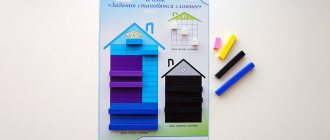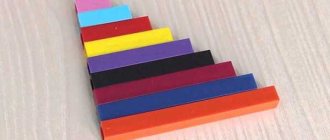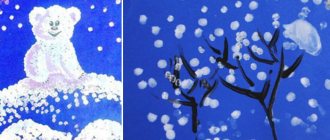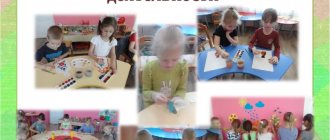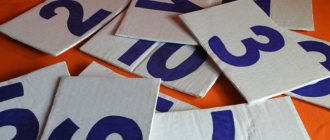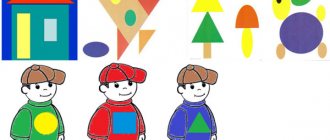Games with counting sticks in kindergarten
Methodological guide for kindergarten: “Lay out from counting sticks”
Didactic game with counting sticks for children 3 - 7 years old
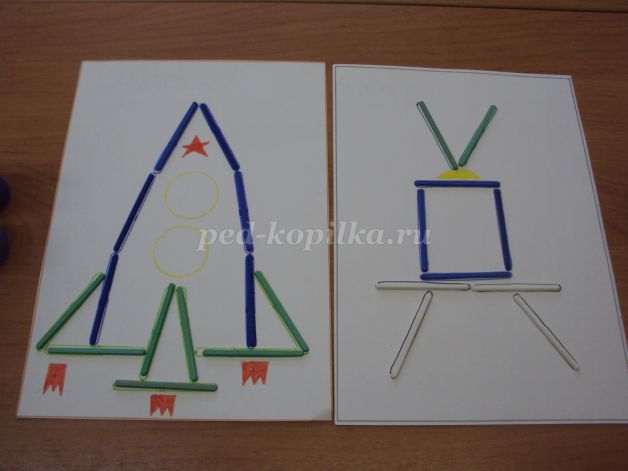
Didactic game with counting sticks for preschool children
Author: Verkhoturova Lyubov Mikhailovna, additional education teacher of the first qualification category, MBOU Dubininskaya secondary school No. 13, Krasnoyarsk region, Sharypovsky district, Dubinino village Description: the work is intended for preschool children, will be of interest to everyone who loves children and knows how to unleash the child’s creative abilities in any work. Purpose: this material is recommended for preschool teachers and loving parents. Integration of educational areas: “Socialization”, “Artistic creativity”, “Health”, “Communication”, “Cognition”. Goal: development of fine motor skills of fingers in children. Objectives: Educational: -create a game environment, consolidate knowledge of colors, counting. Developmental: - develop sensory abilities; — develop constructive skills, coordination of movements; - develop creative imagination and fantasy. Educational: -to develop skills of cooperation, mutual assistance, goodwill; - to cultivate perseverance, independence in work, the ability to name what is drawn in the picture. Materials: counting sticks of different colors, cards for each child with images of familiar objects, a magic box. “Preschool teacher, educate yourself, children learn by imitating” Makarenko. Progress of the game: I. Intrigue. Educator: What do I have in my hands? Children: Box. Educator: What do you think? What's in it? Children: Beads, rings, threads, buttons. Educator: But you didn’t guess, there are objects in the box, they are thin, multi-colored, long, hard, they can be counted, now have you guessed what’s in there? Children: Pencils, twigs, counting sticks. Educator: Yes, there are counting sticks in the box, why do you think we need them, what will we do with them? Children: Play, count. Educator: That's right, we will not only count them, but also lay out drawings from them. II. Carrying out the game. Educator: I have pictures, tell me what is shown on them. Children name the pictures. Educator: Lay out a drawing from counting sticks, choosing the right color; you need to take the sticks one at a time from the box. Children complete the task. Children 3-5 years old place sticks directly on the drawing, children 6-7 years old look at the picture and lay it out on their own. You can offer to come up with your own drawing. If the child has laid out everything correctly, the teacher praises him, asks how many sticks were needed and offers to post another picture. At the end of the game, children say whether their comrades completed the task correctly. III. The result of the game.
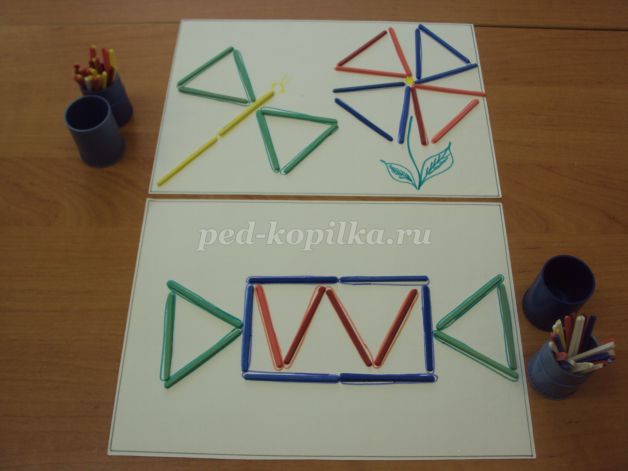
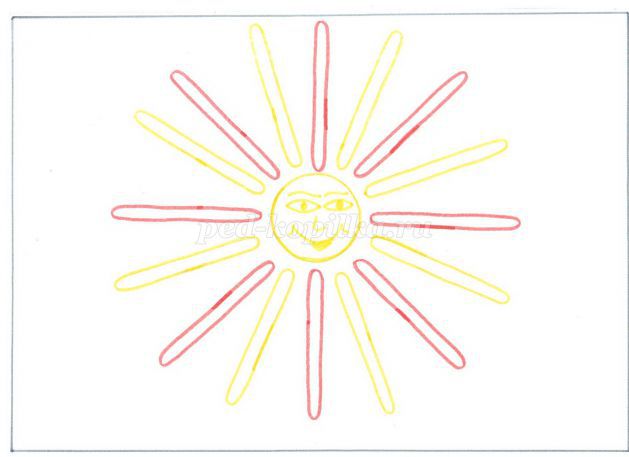
2.Truck.
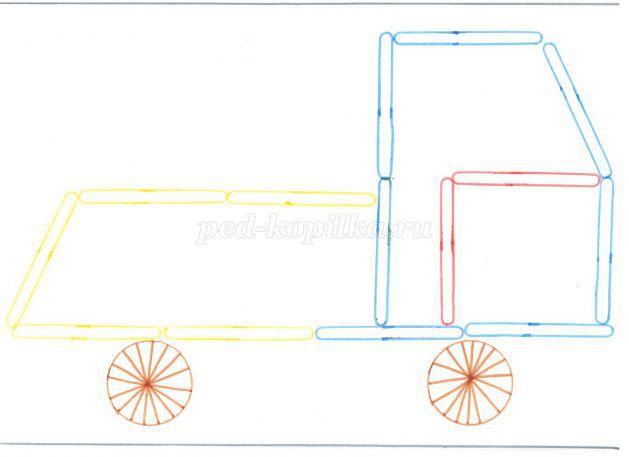
3.Ship.
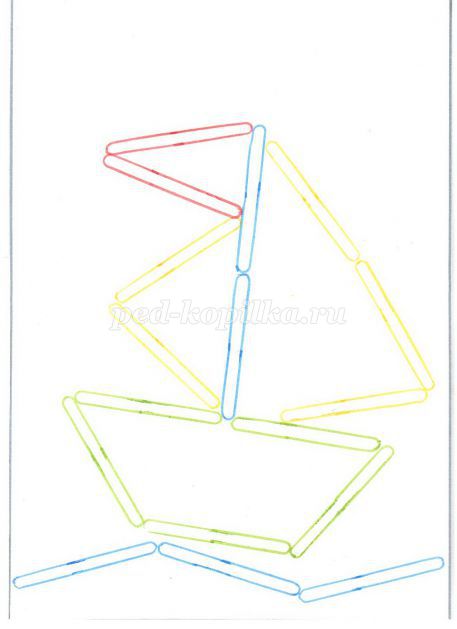
4.Vase.
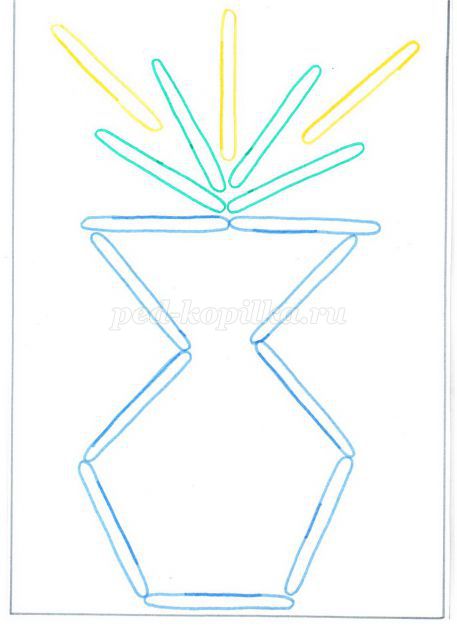
5.Girl.
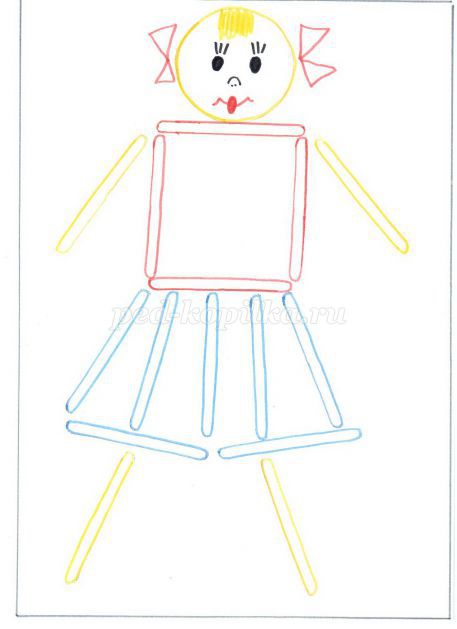
6. Christmas tree.
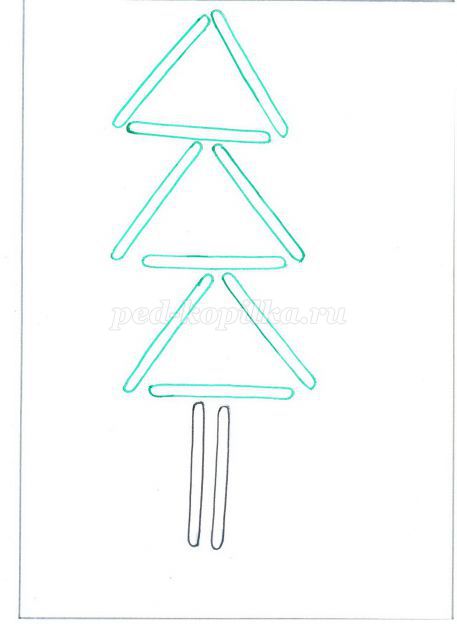
7.Fish.
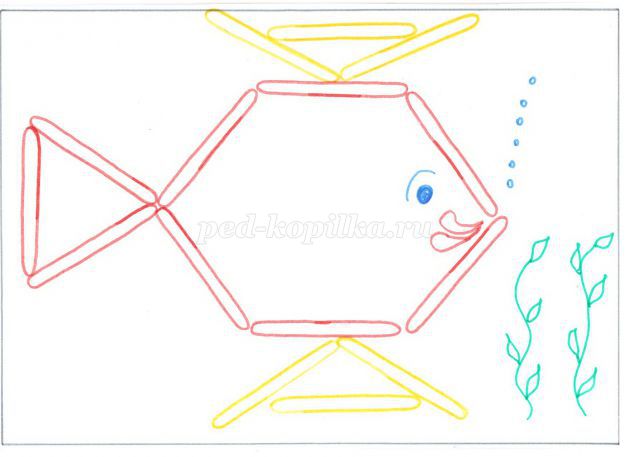
7.Two Christmas trees.
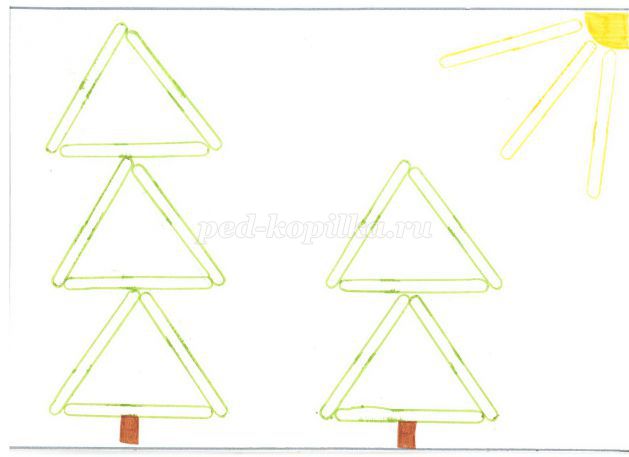
9.Star.
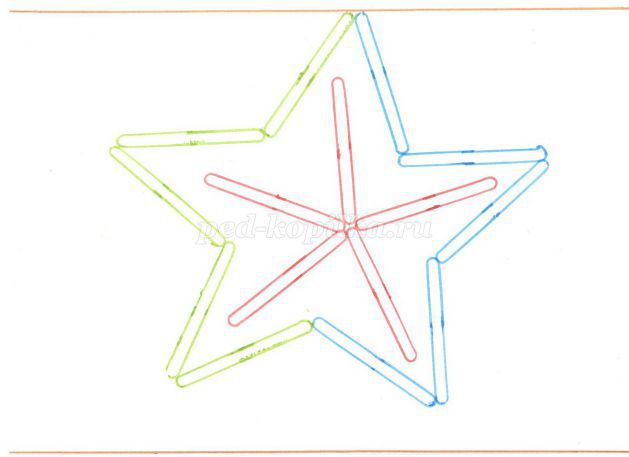
10. Hedgehog.
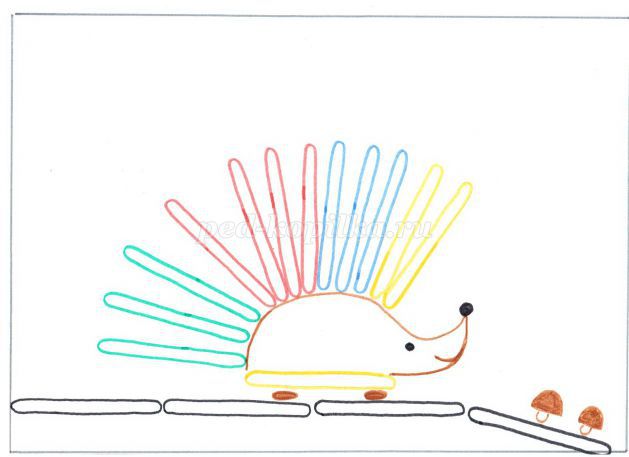
11. Airplane.
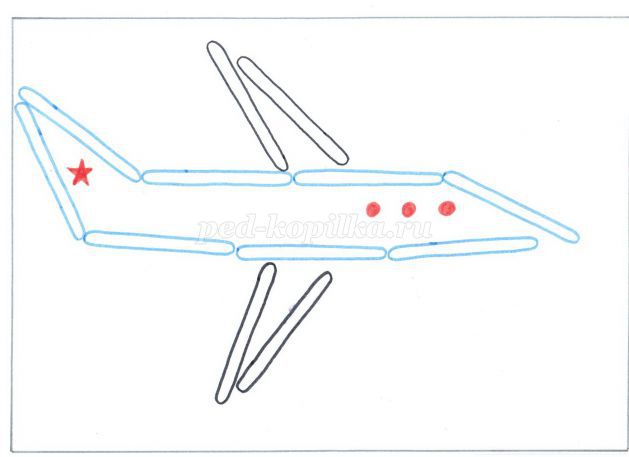
12. Steam locomotive.
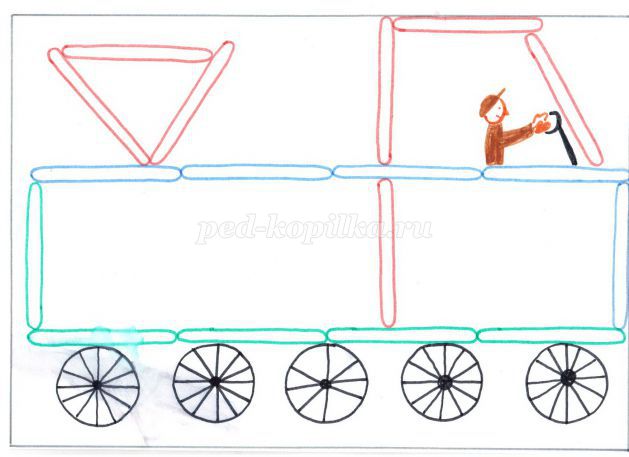
13. Flags.
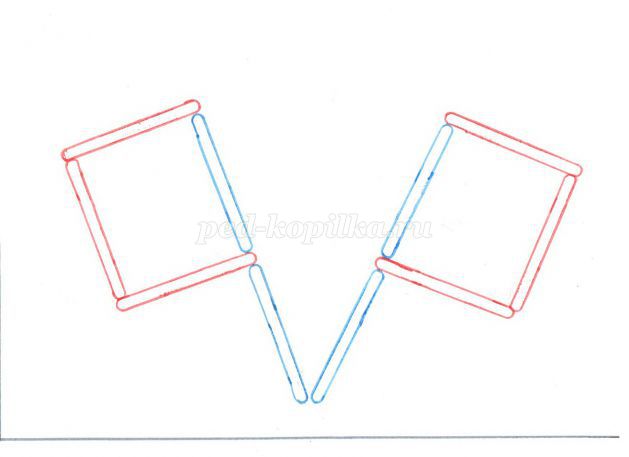
14.Ladybug.
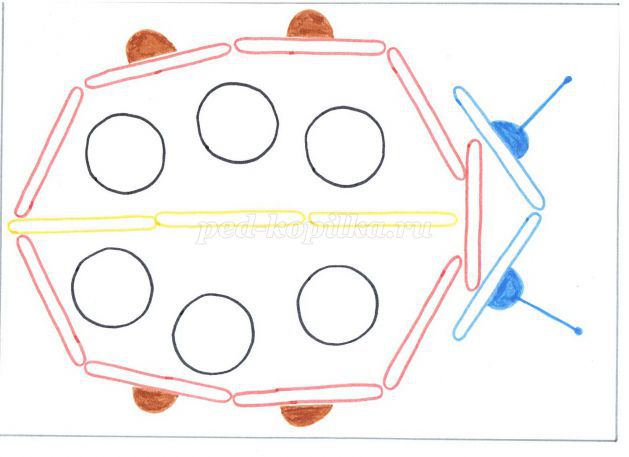
15.Boy.
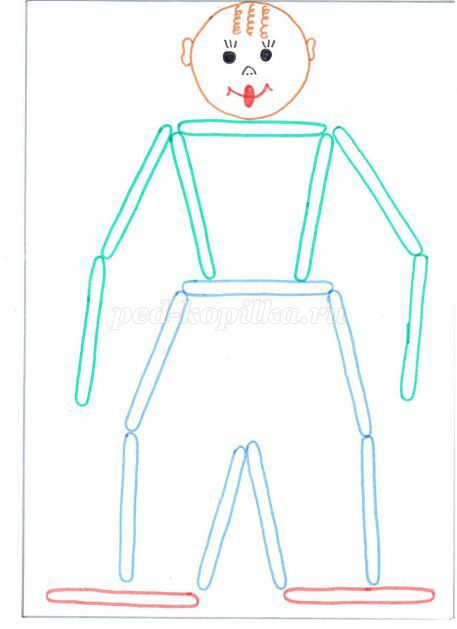
16.House with a tree.
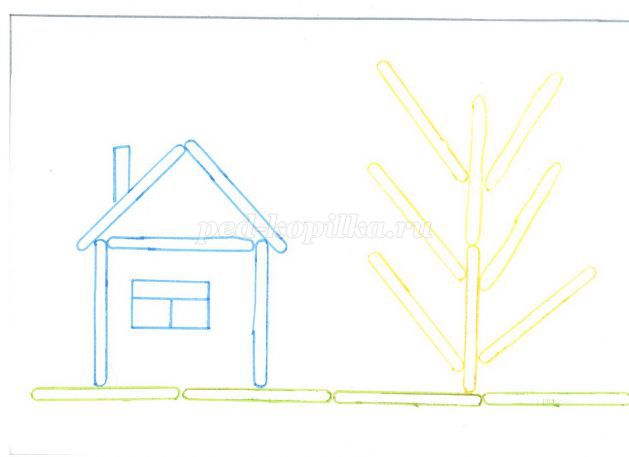
17.TV.
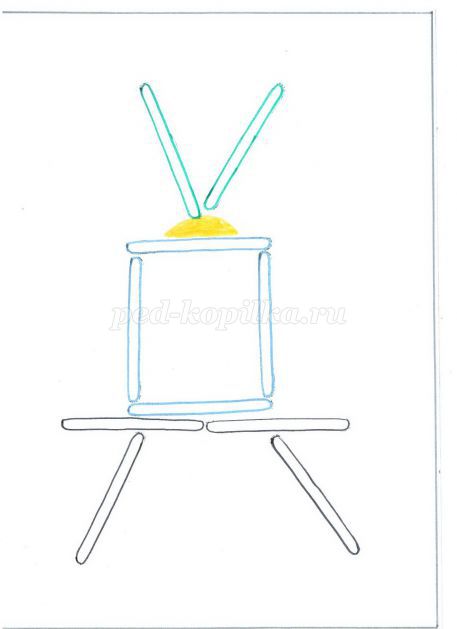
18.A dragonfly flies to a flower.
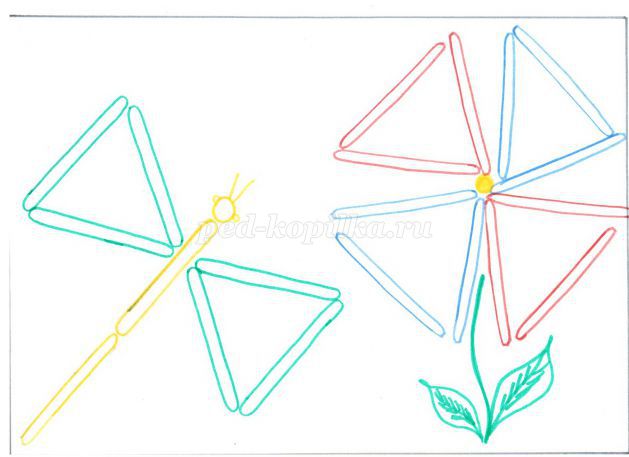
19.Rocket.
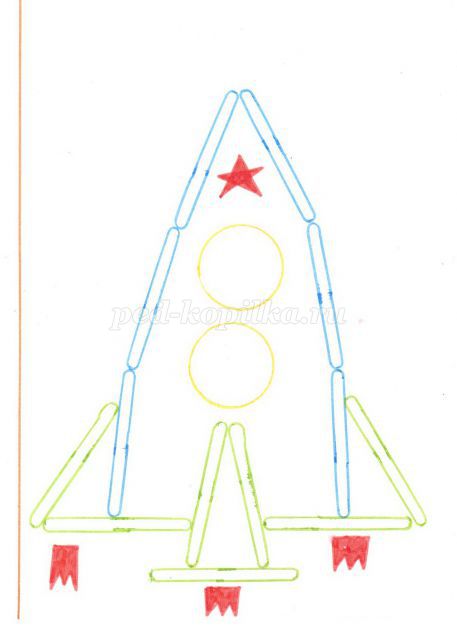
20.Candy.
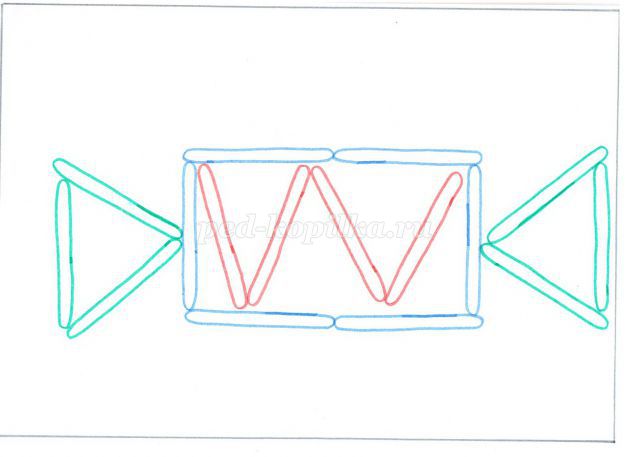
We develop motor skills and play with counting sticks. We fix the colors, the activity is simply beautiful.
We recommend watching:
Didactic game for children from 1 to 5 years old “Family Hobbies” Do-it-yourself outdoor game “Fishing” for kindergarten Scenario of dance entertainment for children 5-7 years old Master class. Making juggling rings
Similar articles:
Games in kindergarten for children from 3 to 5 years old
Educational game in the preparatory group of kindergarten
Ball games for children 5-6 years old at home with parents
Cuisenaire rods: description of the methodology, history and purpose of creating counting exercises
In 1952, a mathematical manual for preschoolers and primary schoolchildren was published. It was created by the Belgian mathematician George Cuisenaire. During learning, a child uses all his senses, so the method is based on the tactile mastery of some mathematical abstract concepts - orderliness, set, identity.
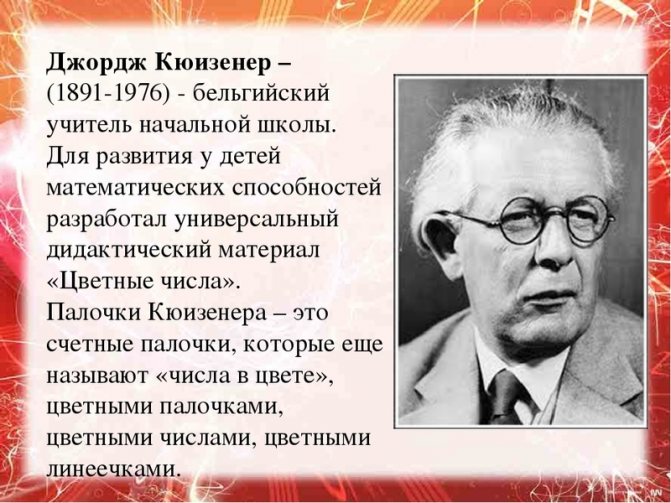
A colleague of the Belgian mathematician, the French scientist and philosopher Caleb Gateno, made this manual popular and for the first time began using colored counting sticks to teach children mathematics and various languages. A child, mastering one science, simultaneously develops other abilities. He will be able to identify logical connections in speculative concepts, learn to use imagination and abstract thinking.
The Cuisenaire rod technique has several goals:
- The child develops a specific counting system;
- the concept of larger and smaller numbers develops;
- skills of addition and subtraction, multiplication and division appear;
- children distinguish between the right and left sides, learn to determine the middle;
- creativity, creative inclinations, modeling and design skills develop;
- cognitive character, visual and effective methods of thinking are manifested, all types of attention are sharpened, the environment is perceived in more detail;
- fine motor skills of the hands improve.
The age for starting classes is determined individually, it depends on the development of the child. But usually the first lessons are given to three-year-old children. Although some teachers advise developing them from the age of one, teaching them to solve mathematical problems with colored sticks.
First stage exercises
Lessons with Cuisenaire cubes take place in two stages: familiarization with the material and formation of the concept of numbers.
First you need to develop visual memory and fine motor skills. Children are asked to distribute all the sticks into groups by color, fold them into a ladder or other shapes. Then the blocks are classified according to other characteristics - length, class of numbers, and simple arithmetic operations are performed. Game lessons begin at one year of age. At this age, children perform familiarization tasks:
- just look at the blocks;
- say the colors of the sticks out loud;
- name other characteristics - length, number value;
- They are trying to build certain shapes from blocks, which their parents will name.
It is better to put such activities in the form of a fairy tale. For example, about a sweet tooth who cannot choose a candy. Whether it is worth eating one red one or several white ones will be determined by the child himself. This way he will learn to add and subtract. You can ask your child to build fences for the little piglets - tall blue for one, medium-sized orange sticks for the second and low white for the third. This will help you learn to compare different quantities.
By the age of three, the list of tasks increases:
- you need to arrange the blocks according to length and shade;
- repeat all the actions of an adult - lay out a figure or line up sticks the way dad or mom did;
- memorization tasks - you need to place blocks in front of the child in a certain order, then remove one of them and ask the child to restore the row;
- measuring the length of surrounding objects using one stick;
- Compare the sizes of different products by touch with your eyes closed.
>
Similarities with Dienesh's technique
In the 60s of the last century, a similar technique was created by the Hungarian theoretician Zoltan Dienes. But benefits have several differences. There are a total of 48 blocks in the box , each with four different parameters:
- shape - triangles, squares, rectangles and circles;
- colors - blue, yellow and red;
- thickness - narrow and wide;
- size - small and large.
This diversity makes it possible to more broadly classify objects according to characteristics, using them to solve mathematical and logical tasks. The child learns to generalize and compare concepts. Cuisenaire's sticks are aimed specifically at working with numbers and mathematical operations, and Dienesh's blocks increase the child's intellectual level in all areas.
Description of the kit
Cuisenaire sticks are a set of 116 sticks of different colors and lengths. Total 10 colors: white, pink, blue, red, yellow, purple, black, burgundy, blue, orange.
Each color corresponds to a length. The white stick is the shortest, it is a cube 1 cm long, the orange one is the longest - 10 cm.
The table shows that all colors form three families + white, black (neutral) colors. Orange and purple are present in two families, as they appeared due to the mixing of these colors.
